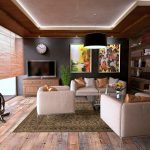Plenty of people have heard the term “product design”, but do you actually know what this means? For businesses looking to manufacture new products, product design is an essential step in this process.
Ultimately, design is all about solving problems and product design is no different. Product designers look to find the best solution for customers needs, wants and problems and then help to develop a product that fits this.
Product design isn’t a quick and easy process, it involves many different team members and hours of ideation, design iterations and prototyping. Then, hopefully, the end product will be one which matches both what the business are looking to produce and the needs of their customers.
The product design process
As mentioned, the product design process is not necessarily quick and easy. We’ve outlined some of the core steps that are taken when it comes to product design.
Different businesses will have their own specific steps and ways of doing things, but these are an overview of what you might expect.
1. Create a vision
Before the design process starts, you need to know why you are creating the product in the first place.
Creating a vision and strategy for your product helps to guide the team and ensure everyone knows what is being built and why it is being built. There is no use going in blind, as this will get messy and confusing for everyone involved, and without structure you are unlikely to make anything at all.
2. Research
Once you have decided what you are going to create and have an idea of who your target customers are, you can start to do some research.
You should do both user and market research to help inform your design process and to get a wider understanding of how your product will solve a problem. You can use tools such as Kano Model to understand the public demand with regard to your product. Market research tools can also help you in creating a unique product with the help of data analysis.
Try to do surveys, focus groups, and research on other products that claim to solve a customer’s problem to find out where the gaps are in the market that you may be able to fill.
3. Ideation
Once you have completed initial research, you should start to ideate. Ideation is the process of coming up with ideas and can be a combination of many strategies from story boarding to wireframing.
Your team should try to come up with as many ideas as they possible can to begin with for how the product should look, how it will match business goals, how it will solve customer pain points, etc.
At this stage, no idea is a bad idea and you can begin to whittle them down to ideas that are best, before developing these selected ideas further. At the end of ideation, you should have a more firm idea of what it is you want to create and should be ready to provide your designer with a brief.
4. Design and prototyping
By this stage, you should know what product you want to create and should have provided the product design team with a brief.
In this phase, the product will come to life more. Initial designs will be created and the team will be able to see prototypes of the product and make iterations to the designs based on how the prototypes turn out.
Prototypes can then be tested by you and potential customers to understand how the product might improve before it is manufactured fully.
5. Test
As mentioned above, now is the time that you will use your prototype to test whether it is a product that customers will want to buy and whether it solves their problems effectively.
Testing can happen after each prototype if you feel that this is necessary, as users can give their feedback on each stage regarding the overall design and the actual usability of the item.
Testing is absolutely vital to the product design process, and should not be ignored. Once you’re happy with your designs and your prototype testing, you can create your product!
In a world where consumers are offered hundreds of thousands of products, you must ensure you are fulfilling customer’s needs and standing out. When choosing a product designer, make sure you choose one which puts the user first. To keep customers coming back you need to create an experience that the users remember and enjoy.



